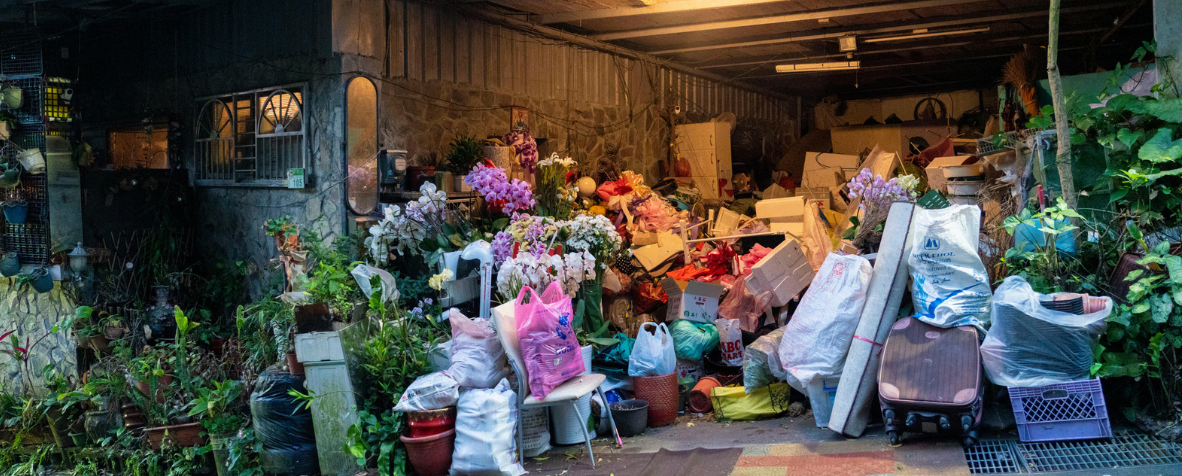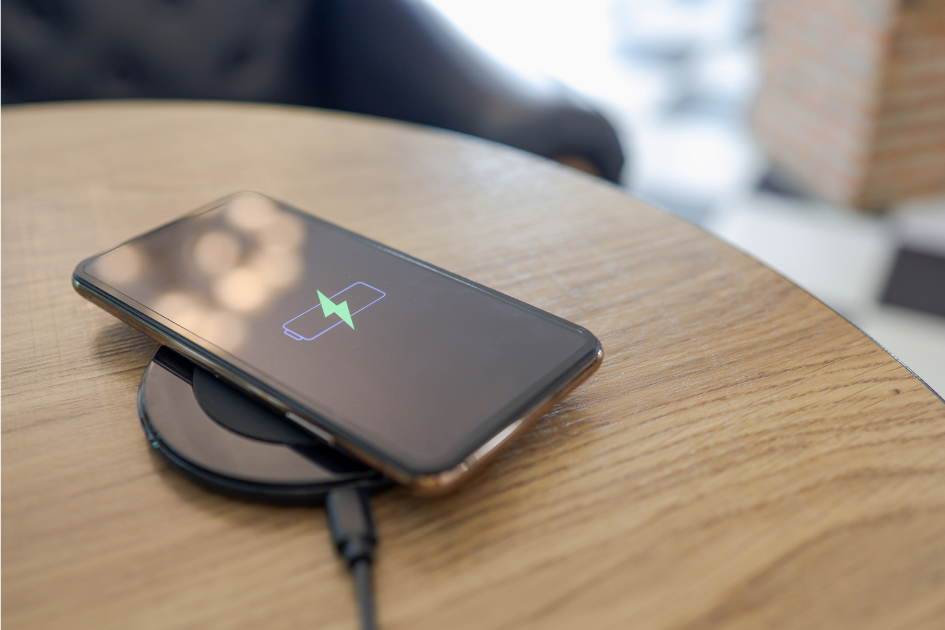"Libraries Transform"
That's the theme of this year's National Library Week, an annual awareness celebration sponsored by the American Library Association.
You might be wondering why something as ubiquitous as a library would need more attention, considering the fact they've been pretty major staples of civilization since at least 2600 B.C. But that's because you live in a time and place where information resources are readily available, so it's easy to take them for granted. And of course, the only reason we have books and knowledge and guidance right there at our fingertips is — you guessed it — libraries.
Here are some physically transformative libraries from across the globe to show you just how transcendent they can be.
Tree of Knowledge? Books are like trees turned into knowledge! Photo by Alfred Pizzoli/AFP/Getty Images.
1. Geisel Library — University of California, San Diego
This beautiful brutalist spaceship was named for Dr. Seuss (aka Theodor Seuss Geisel), and plenty of Seussian statues litter the gardens around it.
Photo by Belis@rio/Flickr.
2. Admont Abbey library — Admont, Austria
The largest monastic library in the world dates back to 1776, and contains thousands upon thousands of historical manuscripts and records from throughout the monks' history.
Photo by Jorge Royan/Wikimedia Commons.
3. The AD White Reading Room at Uris Library — Cornell University
This reading room was named for one of the co-founders of the university, but it looks more like something out of a Lemony Snicket story. The library's collection also claims one of the only extant copies of the Gettysburg Address, plus first editions of "Origin of Species," the "Book of Mormon," and "Pride and Prejudice."
Photo by eflon/Flickr.
4. Bibliotheca Alexandrina — Egypt
The original Ancient Royal Library of Alexandria was built in the third century B.C., but the newest building to commemorate it was inaugurated in 2002. The original structure was destroyed and burned frequently during historical conflicts, so while the library's latest iteration might not be that old, it's still pretty stunning.
Photo by Patrick Kovarik/AFP/Getty Images.
5. Arma de Instrucción Masiva — Buenos Aires
Why yes that is an armored tank that travels the world giving out books. OK, technically it's a converted Ford Falcon designed by an Argentinian artist named Raul Lemesoff, but this "weapon of mass instruction" (get it?) is still awesome.
Photo by Carlos Adampol Galindo/Flickr.
6. Mobile Beach Library — Tel Aviv
Who cares about a beach bod when you can flex your mind? The Tel Aviv Municipality cultural department set this cart up at Metzitzim Beach for the enjoyment of locals and tourists alike.
Photo by Jack Guez/AFP/Getty Images.
7. Levinski Garden Library — Tel Aviv
Also found in Tel Aviv, this stand was setup in 2010 as a "social-artistic urban community project" specifically designed to appeal to the city's immigrant and refugee populations.
Photo by Itzuvit/Wikimedia Commons.
8. Biblioteca Vasconcelos — Mexico City
Speaking of knowledge, Wikipedia leads me to believe that this $100 million project is totally definitely not a glitch in "The Matrix." OK, sure.
Photo by Eneas De Troya/Flickr.
9. The Bibliobus, Bookmobile, or other motor-powered information vehicle
Easily accessible information is a key tenet to democracy. But not everyone can get to a physical library (or a computer with internet access). So these bookbuses bring the words to the people (or at least to underserved communities in their respective municipalities).
This particular one is run by the Ottawa Public Library system. Photo by SimonP/Wikimedia Commons.
10. Kudapustaka (translated: "horse library") — Indonesia
The mobile libraries above are cool and all, but they're not so useful for remote locations like Central Java Indonesia. Like a knight in paperback armor, Ridwan Sururi and his trusted steed, Luna, spread knowledge across the communities of the island, helping to educate its many residents.
Photo by Putu Sayoga/Getty Images.
11. Biblioburro (translated: "donkey library") — Colombia
Similar to the kudapustaka above, the biblioburro is run by a primary school teacher named Luis Soriano and his donkeys, Alfa and Beto, and it brings literature and adventure to children in poor and remote parts of the country. They even have their very own documentary!
Photo by Acción Visual/Diana Arias/Wikimedia Commons.
12. Tiny Free Libraries — everywhere
We've already written about these and they're still every bit as wonderful as they were then.
Photo by Mandel Ngan/AFP/Getty Images.
13. The Long Room at Trinity College — Dublin
Ireland has a long history of maintaining written records and copies of, well, everything. The history of the Trinity College library goes back to the late-16th century, but since 1801, it's served as an archive collection for any copyrighted material printed in Ireland or the U.K., making it a massive trove of intellectual property.
Photo by David Iliff/Wikimedia Commons.
14. National Library of Kosovo — Pristina
Kosovo has a long and complicated history, but it's still pretty remarkable they were able to take golf balls lodged in a chainlink fence as inspiration for a reference space full of private reading rooms. Yes, it's been called one of the ugliest buildings in the world — but in truth, that shouldn't distract from the incredible fact that a central hub of information like this has remained intact throughout all of the country's conflicts.
Photo by Fitore Syla/Wikimedia Commons.
15. National and University Library — France
Located in Strasbourg near the Eastern border of France, this library was actually founded by the German Empire after the city's original municipal library was destroyed by Prussia. In a testament to the power of information, the new library received an overflow of book donations from countries across Europe and the United States, and it now holds France's second largest collection at 3 million volumes.
Photo by Frederick Florin/AFP/Getty Images.
16. The National Library of China — Beijing
Sometimes reading a good book is like spiraling down an endless hole of awesomeness. That's also how it feels to stare down the levels of China's immaculate National Library, which contains the largest collection of Chinese literature and historical documents in the world, as well as one of the largest overall collections in the world, spanning more than 115 languages.
Photo by IQRemix/Flickr.
17. Community Bookshelf — Kansas City, Missouri
OK so technically this a parking garage next to the Kansas City Public Library, but it still counts. 'Cause c'mon, that's awesome. Each of the 22 books (which you can imagine endured a daunting selection process) measures approximately 25 feet tall by nine feet wide.
Photo by Tim Samoff/Flickr.
18. Philippines neighborhood library — Manila
After his parents passed away, Nanie Guanlao wanted to find a unique way to honor their memory. So he put a few dozen books outside his house for free and encouraged people to borrow them — which they did and brought back new book donations with them. 15 years later, his home library boasts thousands of books, and some locals consider it the true "national library" of the Philippines.
Photo by Ted Aljibe/AFP/Getty Images.
19. Stockholm Public Library — Sweden
This place is just plain ol' gorgeous. Maybe "Stockholm syndrome" should mean getting lost in these stacks.
Photo by Chibi Code/Flickr.
20. Stadtbibliothek Stuttgart — Germany
Stuttgart's original public library at Wilhelms Palais was the converted home of King Wilhelm II. The new location, which opened in 2011, is less of a castle, more of a spaceship come from the future to transport our brains beyond the stars. (I always wondered why my friend who grew up in Stuttgart was so well-versed in literature; now I understand.)
Photo by O Palsson/Flickr.
21. The Beinecke Rare Book & Manuscript Library — New Haven
One of the world's largest libraries devoted entirely to rare books and manuscripts, they have an original Gutenberg Bible! And if that's not amazing enough, just look at those glass columns. It's like the past and the future converged in one place. Books will blow your mind, man.
Photo by Lauren Manning/Flickr.
22. Metropolitan book vending machinea — Tokyo
Looking for cigarettes, soda, or maybe snack? Japan's got a better idea — use your imagination. (Please note: Thoughts do not contain calories and Upworthy is not responsible for any damage caused by supplementing your nutritional intake with books.)
Photo by Pedro Layant/Flickr.
23. This converted phone booth — Prague
Can you think of a better way to brighten up a hospital waiting room? If you're a book fiend with a crippling fear of hospitals, like me, it's perfect. Phone booth libraries like this have also been known to pop up in places like London and Berlin, particularly as mobile phones have increased in popularity and stationary phone booths have otherwise lost their purpose.
Photo by Michael Cizek/AFP/Getty Images.
24. National Library of Brazil — Rio de Janeiro
The largest library in Latin America has been on the cutting edge of science education and technology since it opened in 1810. And like the Mexico City library above, it is definitely totally not a scene from "The Matrix."
Photo by Christophe Simon/AFP/Getty Images.
25. National Digital Library — Seoul
Also known as the "Dibrary," this building boasts plenty of advanced information technology facilities, offering a wide range of e-books and magazines, and digital movies and music — just no actual physical media of any kind. But that's OK; information access still counts in kilobytes as well as in paper (wrote the writer on the website).
Photo by Mosman Library/Flickr.
So yes, libraries transform.
They transform minds. They transform cultures. They even transform the world, both metaphorically and physically. If libraries can transform spaces like this, imagine what they can do to your mind.



 TikTok · Ale
TikTok · Ale

 Joe Heller and a doctor talking to a patient.
Joe Heller and a doctor talking to a patient. A man proposing to a woman at sunset.via
A man proposing to a woman at sunset.via  A hoarder's garage.Image
A hoarder's garage.Image 

 Phone charging.
Phone charging. bill nye chemistry GIF by NETFLIX
bill nye chemistry GIF by NETFLIX 
 Autumn created this piece when she was just 5 years old.Autumn de Forest
Autumn created this piece when she was just 5 years old.Autumn de Forest  Autumn de Forest paints Autumn de Forest
Autumn de Forest paints Autumn de Forest  An Autumn de Forest paintingAutumn de Forest
An Autumn de Forest paintingAutumn de Forest 
 Autumn de Forest stands with the Pope who looks at one of her paintings Autumn de Forest
Autumn de Forest stands with the Pope who looks at one of her paintings Autumn de Forest 
 Jim Carrey Idk GIF
Jim Carrey Idk GIF  A young Adriano Celentano singing on stage By Collezione Biblioteca Comunale G.D. Romagnosi, Salsomaggiore Terme, Public Domain,
A young Adriano Celentano singing on stage By Collezione Biblioteca Comunale G.D. Romagnosi, Salsomaggiore Terme, Public Domain,